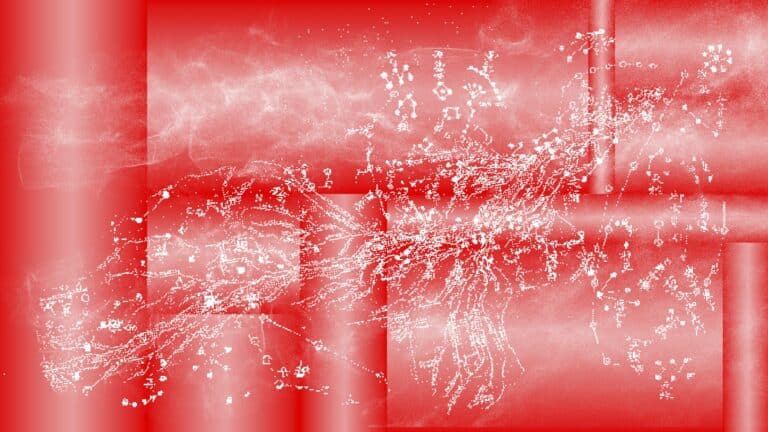Image: Flora Weil for Noema Magazine
When one country’s desert forms another’s rain, then one’s dream is another’s peril.
In the 1860s, a restless young adventurer named Jack Swilling spent years in the unforgiving American Southwest engaged in one of the country’s favorite pastimes: running from his past and trying to get rich. After years of rough living, he made an unusual discovery that would alter both his life and the destiny of the region.
Scouting through the Salt River Valley, Swilling glimpsed faint markings and mounds of earth that stretched for miles across the arid Arizona landscape. He followed the paths, accidentally discovering the remains of a colossal water transfer system — an advanced irrigation network that rivaled the Roman aqueducts in both scope and engineering precision.
The Hohokam civilization, once the region’s predominant power, had begun meticulously forging this sinuous system of miles and miles of waterways across the arid desert as early as the 1st century C.E. With water sourced from the distant Salt River, the Hohokam perhaps cultivated more than 10,000 acres of arid land. The capillaries of their sprawling water infrastructure allowed them to tower over neighbors, amassing tributes and military support from surrounding tribes. Engineering and maintenance of their vast agriculture system required a despotic, centralized order that flourished for hundreds of years.
And then around 1500 C.E., it disappeared with barely a trace. The exact causes of the collapse remain unsolved, but to the best of historians’ understanding, it was due mainly to drought that even the Hohokam irrigation system couldn’t manage.
For Swilling, however, the remains of this water infrastructure became an opportunity. He founded the Swilling Irrigation and Canal Company and set out to rebuild the Hohokam canal network. By 1867, streams of liquid gold flowed from the Salt River more than 200 miles away to nourish a nascent agricultural industry. The oasis required a fitting name. Among Swilling’s ensemble of entrepreneurs and criminals, the Englishman Darrell Duppa proposed the name “Phoenix.” According to Duppa, “A great race once dwelt here, and another great race will dwell here in the future. I prophesy that a new city will spring, phoenix-like, from the ruins and ashes of the old.”
A century and a half later, the American Southwest is sweltering under another harsh drought. Last year, 1,000-foot wells dug deep underground by residents of Rio Verde, a community on the outskirts of Phoenix, started coming up dry. The neighboring city of Scottsdale stepped in to help, hauling water to Rio Verde homes in trucks. Then in January of 2023, those were halted too.
In the meantime, Phoenix has become one of America’s fastest-growing cities, a trend bolstered by preferential tax schemes and the growth of the (very water-hungry) semiconductor industry. The city now has America’s largest manufacturing capacity for advanced chips.
But the deep drought across the parched landscape haunts citizens and local politicians. The once unthinkable prospect of running out of water has become thinkable. One Arizona resident noted, “Hell yes, there’s a panic. We’re on the front lines of the panic. As it looms and gets closer, of course now more people are opening their eyes going, ‘Oh my gosh, this is actually a real thing.’”
The cause — and perhaps solution — of the multi-decade megadrought stifling the American Southwest on a scale not seen in more than a millennium is tied in surprising ways to another desert, one on the other side of the world. Seven thousand miles away, in the Taklamakan Desert, dust is blown into the jet stream that links western China to the Western United States. This Asian dust, scientists have found, contributes to rainfall in America, a reminder of the planetary equilibrium the two countries are intimately enmeshed in. In this precarious symbiosis, discoveries by both nations in understanding and mitigating the plight of drought may forge a powerful […]
Full article: www.noemamag.com

